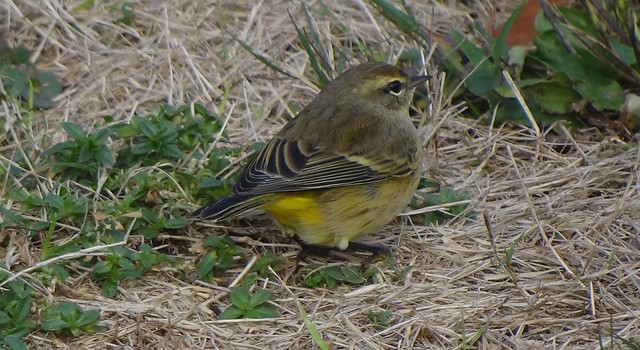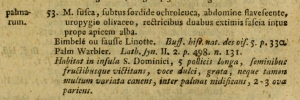They’re not always the same thing. They’re not even usually the same thing. It’s devastatingly easy to get something wrong in the smartest possible way. Take the name of the pretty little bird in the photograph, for example.
For forty years now (!), I’ve been hearing how stupid the name “palm warbler” is for a bird that breeds in bogs and then paces off lawns and fields on chilly October days.
The name is wrong, maybe, if any member of the category of nouns we call names can be “wrong,” in commemorating only one stage in this warbler’s life history — the six or seven months it spends on the wintering grounds each year, where, yes, palm warblers can once in a while be seen in palms.
John Latham coined the English name in reliance on notes submitted to Buffon by the members of the Cercle des Philadelphes in St-Domingue. Etienne Lefevre-Deshayes, the club’s official correspondent, even sent a colored drawing of the new bird, which was known in the colony as the “false linnet” or the “bimbelé.”
The Philadelphians reported that this warbler frequented palm trees, placing its nest atop the broad, flat petioles where they sprouted from the trunk.
That was wrong. But it wasn’t stupid: with no field guides, no binoculars, no preconceptions, the observers of the mid-eighteenth century did their best — and made mistakes.
It was even less stupid for Buffon and his collaborators to take the colonists at their word, and even less stupid for Latham to place his confidence in what he read in Buffon, and even less stupid for Gmelin to assign the bird a latinizing binomial based on what he found in Buffon and Latham.
They were wrong, all of them. But to call any of them stupid would be … not right.



